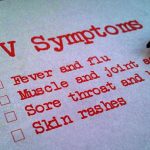In less than 15 years, the world may soon call itself “malaria-free.” Led by the World Health Organization (WHO), nations during the Geneva for the United Nation’s health body’s annual decision-making assemblyagreed to aim to eradicate malaria or, at the very least, cut malaria cases by 40% by 2020 and by 90% by 2030. The plan also calls for completely eliminating malaria in at least 35 new countries over the next 15 years.
Malaria is a life-threatening blood disease caused by a parasite that is transmitted to humans by the Anopheles mosquito. According to the United States Centers for Disease Control and Prevention, people who get malaria typically become very sick with high fevers, shaking chills, and flu-like illness. Malaria may result in severe infections and if not promptly treated, may lead to death.

An eradication campaign was started back in the 1950s, but it failed globally because of problems including the resistance of mosquitoes to insecticides used to kill them, the resistance of malaria parasites to drugs used to treat them, and administrative issues. In addition, the eradication campaign never involved most of Africa, where malaria is the most common.
Globally, WHO estimated in 2013 that 198 million clinical cases of malaria occurred, and 500,000 people died of malaria, most of them children in Africa. The disease currently kills 600,000 people each year, with Africa accounting for 90%of the world’s malaria deaths.

Pedro Alonso, head of WHO’s Global Malaria Programme, said that their targets were ‘ambitious but achievable’ and would ‘bring us very close to eradication’. These measures include the development of new and better drugs (as opposed to previous drugs with which the parasite has grown resistant to), diagnostics, insecticides, and vaccines. WHO estimates the program will cost around $100 million, but, needless to say, it will still be a very worthy investment.
“Eliminating malaria, reducing the burden in terms of lives saved, but also the expenses incurred by health systems and by loss of productivity vastly outweighs the cost of this strategy,” Alonso said.



